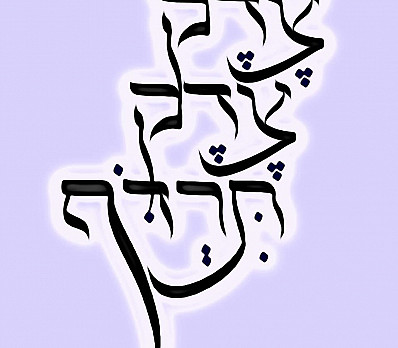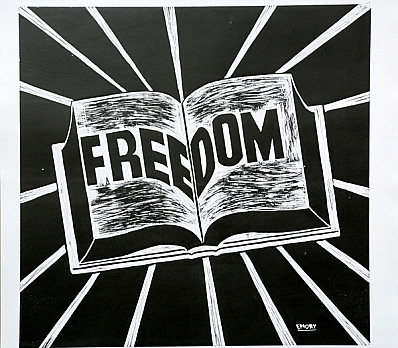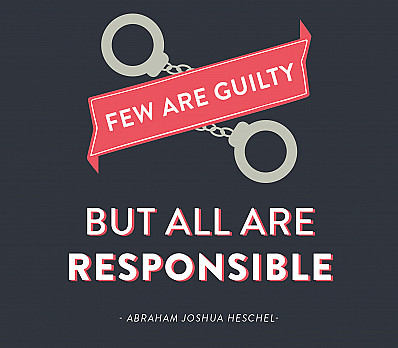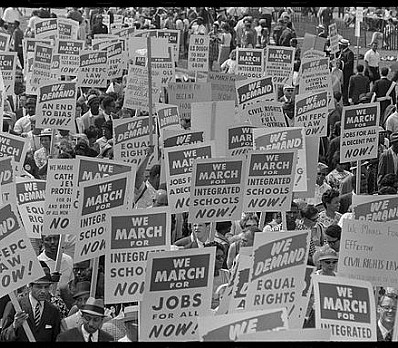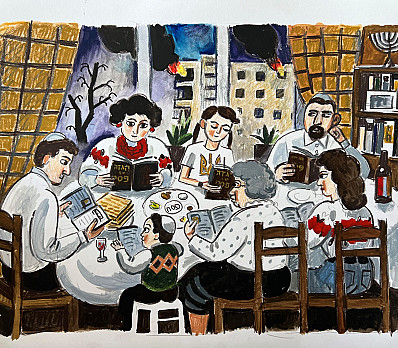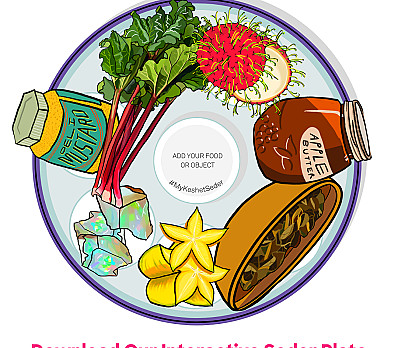We have updated our Terms of Service contract
Updated on Feb 20, 2023
Welcome to Haggadot.com (the "Site"). Haggadot.com, customandcraft.org, [email protected] and all future,
as-yet-to-be-created brands are projects of Custom & Craft Jewish Rituals, Inc., which is the legal name of this
California nonprofit organization (hereinafter referred to as “Haggadot.com”). All projects of Custom & Craft Jewish
Rituals are subject to the Terms of Service described below. This Terms of Service ("TOS") contain the terms and
conditions that govern your use of the Site, and the Haggadot.com Service (as defined below). This TOS describes your
rights and responsibilities and what you can expect from the Haggadot.com Service. Use of the Site constitutes your
acceptance of and agreement to this TOS.
Haggadot.com reserves the right to add, delete, and/or modify any of the terms and conditions contained in this TOS, at
any time and in its sole discretion, by posting a change notice or a new agreement on the Haggadot.com Site. In the
event of substantive changes to this TOS, you may be notified by email. If any modification is unacceptable to you, your
only recourse is to not use the Site and the Haggadot.com Service. Your continued use of the Haggadot.com Site following
posting of a change notice or new TOS on the Haggadot.com Site will constitute binding acceptance of the changes.
The Haggadot.com Service.
Haggadot.com provides a number of Internet-based services through the Site as well as any other Haggadot.com affiliate
websites, digital content, mobile applications, online service or anywhere the TOS are shown (all such services,
collectively, the "Haggadot.com Service"). One such service enables users to create customized products, including
without limitation, merchandise and books (collectively, "Products"). Haggadot.com users may create and purchase
individual Products for their own personal use. Haggadot.com may offer a number of other services on its Site, including
without limitation, message boards, contests, and newsletters, which may change from time to time.
Use of the Web Site and Haggadot.com Service.
Eligibility. Haggadot.com will only knowingly provide the Haggadot.com Service to parties that can lawfully enter into
and form contracts under applicable law. If you are under the age of 18, but at least 13 years of age, you may use the
Haggadot.com Service only under the supervision of a parent or legal guardian who agrees to be bound by this TOS. The
Haggadot.com Service is not intended for children under the age of 13.
Compliance with TOS and Applicable Law. You must comply with all of the terms and conditions of this TOS, the applicable
agreements and policies referred to below, and all applicable laws, regulations and rules when you use the Haggadot.com
Service and the Site.
Your License to Use the Web Site and the Haggadot.com Service.
Haggadot.com solely and exclusively owns all intellectual property and other rights, title and interest in and to the
Haggadot.com Service and Site, except as expressly provided for in these TOS. For example and without limitation,
Haggadot.com owns the copyrights in and to the Site, and certain technology used in providing the Haggadot.com Service.
You will not acquire any right, title or interest therein under this TOS or otherwise to any intellectual property owned
by Haggadot.com.
Haggadot.com grants you a limited revocable license to access and use the Site and the Haggadot.com Service for your own
personal purposes, subject to your compliance with this TOS. This license does not include the right to collect or use
information contained on the Site for purposes prohibited by Haggadot.com; to compete with Haggadot.com; to create
derivative works based on the content of the Site; or download or copy the Site (other than page caching). If you use
the Site in a manner that exceeds the scope of this license or you breach this TOS, Haggadot.com may revoke the license
granted to you.
This Section 2.3 does not pertain to your intellectual property rights. For information regarding your intellectual
property rights, please see Section 4.
Third-Party Content: Wherever Haggadot.com websites, online services, and digital content make reference to third party
organizations or include information, content, or graphics from third parties, Haggadot.com assumes third-party content
is for general informational purposes only and displaying third-party content does not constitute a recommendation or
endorsement of the opinion, product or service. Haggadot.com makes no claim as to the accuracy or relevance of
third-party content. If you decide to access any other websites linked to or from this website, you do so entirely at
your own risk.
Third-Party Services. Haggadot.com may use third parties to provide certain services accessible through the Site.
Haggadot.com does not control those third parties or their services, and you agree that Haggadot.com will not be liable
to you in any way for your use of such services. These third parties may have their own terms of use and other policies.
You must comply with such terms and policies as well as this TOS when you use those services. If any such terms or
policies conflict with Haggadot.com's TOS, agreements, or policies, you must comply with Haggadot.com's TOS, agreements,
or policies, as applicable.
General Rules.
Prohibited Use. You may only use the Haggadot.com Service as expressly permitted by Haggadot.com. You may not cause harm
to the Site or the Haggadot.com Service. Specifically, but not by way of limitation, you may not: (i) interfere with the
Haggadot.com Service by using viruses or any other programs or technology designed to disrupt or damage any software or
hardware; (ii) modify, create derivative works from, reverse engineer, decompile or disassemble any technology used to
provide the Haggadot.com Service; (iii) use a robot, spider or other device or process to monitor the activity on or
copy pages from the Site, except in the operation or use of an internet "search engine," hit counters or similar
technology; (iv) collect electronic mail addresses or other information from third parties by using the Haggadot.com
Service; (v) impersonate another person or entity; (vi) use any meta tags, search terms, key terms, or the like that
contain Haggadot.com's name or trademarks; (vii) engage in spamming or any activity that interferes with another user's
ability to use or enjoy the Haggadot.com Service; (viii) assist or encourage any third party in engaging in any activity
prohibited by this TOS; (ix) upload to, transmit through, or display any material that is unlawful, fraudulent,
threatening, abusive, libelous, defamatory, obscene, or otherwise objectionable or that infringes any third party’s
intellectual property rights or any confidential, proprietary, or trade secret information of any third party; (x)
upload, transmit, or display any advertisements, solicitations, chain letters, pyramid schemes, investment
opportunities, or other unsolicited commercial communications (unless expressly permitted); (xi) display adult nudity or
inappropriate child nudity; (xii) use the Site for sale of goods or services; or (xiii) upload photographs or other
content depicting images or people who have not given permission to have their photographs or images uploaded to a share
site.
Privacy Policy. By entering into this TOS, you agree to Haggadot.com's collection, use and disclosure of your personal
information in accordance with the Privacy Policy as amended from time to time.
Password Security. You are solely responsible for protecting the security and confidentiality of the password and
identification assigned to you. You shall immediately notify us of any unauthorized use of your password or
identification or any other breach or threatened breach of this website’s security.
Ordering Policies. If you purchase Products, you agree to do so in accordance with Haggadot.com's ordering policies and
instructions on the Site. Your order constitutes an obligation to pay, subject to acceptance by Haggadot.com at our sole
discretion. Your order is accepted by us when we ship the goods to you. An order confirmation does not signify our
acceptance of your order, but merely confirms receipt of your order. We will send you a shipment confirmation once your
order is accepted. Haggadot.com reserves the right to cancel any order prior to delivery at our sole and absolute
discretion, whether or not you have already been charged. If your order is canceled pursuant to this section, and you
have already been charged, Haggadot.com will automatically issue a refund to you. As the products are individually
produced, an approximate availability and delivery time are shown alongside the product description prior to order
completion. The products will be delivered as soon as they are available. The times are estimates only and cannot be
guaranteed. At the latest, delivery will occur within thirty (30) days from acceptance of your order by Haggadot.com.
Please note that Haggadot.com is not able to deliver to all regions worldwide. All prices are subject to the delivery
charges, as well as any applicable taxes, duties, fees, or levies. Haggadot.com reserves the right to change the prices
published on the Services at any time. However, orders already submitted to us will not be affected by such changes.
Title to the Products you purchase passes to you when the Products are delivered to the common carrier.
Create and Buy General Rules and License.
Description. As part of the Haggadot.com Service, Haggadot.com offers a service (the "Create & Buy Service") that allows
you to upload images, video, audio, data, and other content as well as text, files, and works of authorship
(collectively, "Content") to the Site to create, produce, and purchase Products featuring the uploaded Content for your
own use. “Content” also includes without limitation, any Content that you contribute or share with other members through
the Site.
Delivery of Content. You will upload or deliver to Haggadot.com all Content that you want to use with the Create & Buy
Service in accordance with the applicable instructions on the Site. Haggadot.com may, in its sole and exclusive
discretion, determine whether any Content complies with such instructions and is satisfactory for use with the Create &
Buy Service.
Ownership of your Content. You represent and warrant that you own or otherwise possess all necessary rights with respect
to the Content and that the Content does not and will not infringe, misappropriate, use, or disclose without
authorization or otherwise violate any copyright, trademark, trade secret right, or other intellectual property or other
property right of any third party.
Use of Likeness. You consent to the use of your likeness, and you have obtained the written consent, release, and/or
permission of every identifiable individual who appears in the Content to use such individual’s likeness, for purposes
of using and otherwise exploiting the Content in the manner contemplated by these TOS. If any such identifiable
individual is under the age of eighteen (18), you have obtained such written consent, release, and/or permission from
such individual’s parent or guardian. You agree to provide a copy of any such consents, releases, and/or permissions
upon our request.
Licensing Your Content to Haggadot.com. You will retain ownership of the Content that you upload to the Site. You hereby
grant to Haggadot.com a perpetual, irrevocable, fully-paid and royalty-free, worldwide, transferable, nonexclusive,
sublicensable (through multiple tiers) right and license to: (i) use such Content, in all media existing now or created
in the future, as Haggadot.com deems necessary to enable you to use the Create & Buy Service to create, produce, and
purchase Products; (ii) with respect to any Content that you expressly designate as being “public,” to link to, use,
reproduce, create derivative works from, license, sublicense, distribute, print, publicly display, and otherwise utilize
your Content including, without limitation, making your Content available to the Haggadot.com community. Please note
that, while you retain ownership of your Content, any template or layout in which you arrange or organize your Content
through tools and features made available through the Site or the Haggadot.com Service are not proprietary to you, and
the rights to such template or layout are reserved to Haggadot.com.
Licensing Your Content to other Haggadot.com Members. Except for any of your Content that you specify as “private”
during the submission process, you also hereby grant all other members of the Haggadot.com community a non-exclusive,
worldwide, perpetual, irrevocable license to use, copy, publicly display, create derivative works from, and otherwise
communicate and distribute your Content for any purpose on or through the Site or the Haggadot.com Service and/or in the
Haggadot.com member’s own products. You acknowledge and agree that any such Haggadot.com member can exercise the
foregoing rights without further notice, payment, or attribution to you. For avoidance of doubt, any of your Content
that you designate as “public” will not be limited to any restricted purpose and is provided on a non-proprietary and
non-confidential basis and will be generally accessible by other users of the Site and Haggadot.com Service.
Reservation of Rights.
Monitoring. Haggadot.com reserves the right, but does not assume the obligation, to monitor transactions and
communications that occur through the Site. If Haggadot.com determines, in its sole and absolute discretion, that you or
another Haggadot.com user will breach a term or condition of this TOS or that such transaction or communication is
inappropriate, Haggadot.com may cancel such transaction or take any other action to restrict access to or the
availability of any material that may be considered objectionable, without any liability to you or any third party.
Modification of the Service. Haggadot.com reserves the right to modify the organization, structure or "look and feel" of
the Haggadot.com Service or the Site, and may change, suspend, or discontinue any aspect of the Haggadot.com Service at
any time without any liability to you or any third party. Haggadot.com shall have complete discretion over the features,
functions, prices and other terms and conditions on which the Haggadot.com Service is offered to Haggadot.com users.
Submissions.
When you submit questions, comments, suggestions, ideas, message board postings, material submitted via web forms,
contest entries, communications or any other information ("Submissions"), you grant Haggadot.com permission to use such
Submissions for marketing and other promotional purposes, including the right to sublicense. You agree that Haggadot.com
will have no obligation to keep any Submissions confidential. You will not bring a claim against Haggadot.com based on
"moral rights" or the like arising from Haggadot.com's use of a Submission. This Section does not apply to your Content
that you use in connection with the Create & Buy Service. Any personal information you submit is covered by our Privacy
Policy.
You shall not upload, distribute, or otherwise publish through this website any content, information, or other material
that (a) violates or infringes the copyrights, patents, trademarks, trade secrets, or other proprietary rights of any
person; (b) is libelous, threatening, defamatory, obscene, indecent, pornographic, or could give rise to any civil or
criminal liability under U.S. or international law; or (c) includes any bugs, viruses, worms, trap doors, Trojan horses
or other harmful code or properties.
Haggadot.com reserves the right to immediately remove any content it deems offensive, or in violation of these Terms and
Conditions. Haggadot.com also reserves the right to remove a user account, without notice, if the user has been found to
pose a threat to other users or has violated any rule laid out in the Terms and Conditions.
Copyright and Trademark Issues
While we are not obligated to review Content for copyright or trademark infringement, we are committed to protecting
copyrights and trademarks and expect users of our Site and Haggadot.com Services to do the same. The Digital Millennium
Copyright Act of 1998 (the “DMCA”) provides recourse for copyright owners who believe that material appearing on the
internet infringes their rights under U.S. copyright law. If you believe in good faith that any material used or
displayed on or through our Site or the Haggadot.com Services infringes your copyright, you (or your agent) may send us
a notice requesting that the material be removed, or access to it blocked. The notice must include the following
information:
a physical or electronic signature of a person authorized to act on behalf of the owner of an exclusive right that is
allegedly infringed;
identification of the copyrighted work claimed to have been infringed (or, if multiple copyrighted works are covered by
a single notification, a representative list of such works);
identification of the material that is claimed to be infringing or the subject of infringing activity, and information
reasonably sufficient to allow us to locate the material on our Site and/or the Haggadot.com Services;
the name, address, telephone number and email address (if available) of the complaining party;
a statement that the complaining party has a good faith belief that use of the material in the manner complained of is
not authorized by the copyright owner, its agent, or the law; and
a statement that the information in the notification is accurate and, under penalty of perjury, that the complaining
party is authorized to act on behalf of the owner of an exclusive right that is allegedly infringed.
If you believe in good faith that a notice of copyright infringement has been wrongly filed against you, the DMCA
permits you to send us a counter-notice. Notices and counter-notices must meet the then-current statutory requirements
imposed by the DMCA; see http://www.copyright.gov for details. DMCA notices and counter-notices regarding our Site and
the Haggadot.com Services, or notices concerning trademark use in personalized products we make or in our Site and the
Haggadot.com Services, should be sent to:
Haggadot.com
PO Box 385
Saratoga Springs, NY 12866
[email protected]
Upon receipt of a compliant DMCA Takedown Notice, Haggadot.com will investigate the claim, take appropriate action and
serve the notice on our member. If a member submits a DMCA Counter-Notice, Haggadot.com will forward such notice to the
party that submitted the relevant DMCA Takedown Notice and allow the member to repost the disputed content after 10
days, as provided by law. Haggadot.com reserves the right to terminate the account of any member who repeatedly
infringes the copyright rights of others, as determined in Haggadot.com’s sole discretion.
Representations and Warranties.
Mutual Representations and Warranties. You represent and warrant to Haggadot.com and Haggadot.com represents and
warrants to you: (i) that you or it has the full power and authority to enter into and perform under this TOS, (ii) the
execution and performance of your or its obligations under this TOS does not constitute a breach of or conflict with any
other agreement or arrangement by which you or it is bound, and (iii) this TOS is a legal, valid and binding obligation
of the party entering into this TOS, enforceable in accordance with its terms and conditions.
By You. In addition to any other representations and warranties contained in this Agreement, You represent and warrant
to Haggadot.com that, in your use of the Haggadot.com Service, you: (i) will not infringe the copyright, trademark,
patent, trade secret, right of privacy, right of publicity or other legal right of any third party, and (ii) will comply
with all applicable laws, rules, and regulations. You further represent and warrant to Haggadot.com that: (i) there are
no claims, demands or any form of litigation pending, or to the best of your knowledge, threatened with respect to any
of your Content; (ii) Haggadot.com will not be required to make any payments to any third party in connection with its
use of your Content, except for the expenses that Haggadot.com incurs in providing the Haggadot.com Service; (iii) the
use of any instructions, formulae, recommendations, or the like contained in your Content will not cause injury to any
third party; and (iv) your Content does not contain viruses or any other programs or technology designed to disrupt or
damage any software or hardware.
Disclaimers and Exclusions.
DISCLAIMER OF WARRANTIES. Haggadot.com PROVIDES THE SITE AND Haggadot.com SERVICE ON AN "AS IS" AND "AS AVAILABLE"
BASIS. Haggadot.com DOES NOT REPRESENT OR WARRANT THAT THE SITE, Haggadot.com SERVICE OR ITS USE: (i) WILL BE
UNINTERRUPTED, (ii) WILL BE FREE OF INACCURACIES OR ERRORS, (iii) WILL MEET YOUR REQUIREMENTS, OR (iv) WILL OPERATE IN
THE CONFIGURATION OR WITH THE HARDWARE OR SOFTWARE YOU USE. Haggadot.com MAKES NO WARRANTIES OTHER THAN THOSE MADE
EXPRESSLY IN THESE TOS, AND HEREBY DISCLAIMS ANY AND ALL IMPLIED WARRANTIES, INCLUDING WITHOUT LIMITATION, IMPLIED
WARRANTIES OF TITLE, ACCURACY, FITNESS FOR A PARTICULAR PURPOSE, MERCHANTABILITY, NON-INFRINGEMENT AND ANY WARRANTIES
THAT MAY ARISE FROM A COURSE OF DEALING, COURSE OF PERFORMANCE, OR USAGE OF TRADE.
Limitation of Liability.
TO THE FULLEST EXTENT PERMISSIBLE BY APPLICABLE LAW, NEITHER Haggadot.com, NOR ANY OF ITS DIRECTORS, OFFICERS,
SHAREHOLDERS, EMPLOYEES, CONTRACTORS, AGENTS, REPRESENTATIVES, OR AFFILIATES (COLLECTIVELY, “THE HAGGADOT PARTIES”)
SHALL BE LIABLE FOR ANY CONSEQUENTIAL, INCIDENTAL, INDIRECT, PUNITIVE OR SPECIAL DAMAGES (INCLUDING WITHOUT LIMITATION
DAMAGES RELATING TO LOSS OF BUSINESS, LOST PROFITS, LOST DATA, USE, OR LOSS OF GOODWILL) ARISING OUT OF, RELATING TO OR
CONNECTED WITH THE USE OF THE Haggadot.com SERVICE OR THIS TOS, BASED ON ANY CAUSE OF ACTION, OR FROM UNAUTHORIZED
ACCESS TO OR ALTERATION OF YOUR CONTENT OR DATA, EVEN IF A REMEDY SET FORTH HEREIN IS FOUND TO HAVE FAILED ITS ESSENTIAL
PURPOSE AND EVEN IF ADVISED OF THE POSSIBILITY OF SUCH DAMAGES. FURTHERMORE, THE HAGGADOT PARTIES WILL HAVE NO LIABILITY
TO YOU OR TO ANY THIRD PARTY FOR ANY CONTENT UPLOADED. YOUR SOLE AND EXCLUSIVE REMEDY FOR DISSATISFACTION WITH THE SITE
OR THE Haggadot.com SERVICE IS TO STOP USING THE SERVICES. TO THE FULLEST EXTENT PERMISSIBLE BY APPLICABLE LAW, THE
MAXIMUM LIABILITY OF THE HAGGADOT PARTIES SHALL BE THE ACTUAL PRICE PAID THEREFORE BY YOU. NOTE: CERTAIN JURISDICTIONS
MAY NOT ALLOW THE EXCLUSION OR LIMITATION OF INCIDENTAL, CONSEQUENTIAL OR CERTAIN OTHER TYPES OF DAMAGES, SO SOME OF THE
ABOVE EXCLUSIONS OR LIMITATIONS MAY NOT APPLY TO YOU.
Indemnification.
You must indemnify and hold Haggadot.com and its employees, representatives, agents, affiliates, directors, officers,
managers and shareholders (the "Indemnified Parties") harmless from and against any and all claims, causes of action,
liabilities, damages, losses, expenses, and/or. costs (including without limitation, attorneys' fees) that arise
directly or indirectly out of or from: (i) your violation of these TOS or any other agreement or terms of use with us;
(ii) your violation of any representation or warranty contained herein or any applicable law; (iii) your Content; (iv)
your activities in connection with obtaining any products or services from us; or (v) any activity related to access to
or use of your account by you or any other person. The Indemnified Parties shall (a) promptly give you written notice of
the claim; (b) give you sole control of the defense and settlement of the claim against the Indemnified Parties (except
that you may not settle any claim against the Indemnified Parties without the express written consent of the Indemnified
Parties); and (c) give you reasonable assistance, at your expense.
Term and Termination.
Term. This TOS shall remain in full force and effect while you use the Site and Services.
Termination. In its sole discretion, with or without notice to you, Haggadot.com may: (i) suspend, limit your access to
or terminate your use of the Site and/or the Haggadot.com Service; (ii) suspend, limit your access to or terminate your
account; (iii) remove any of your Content from Haggadot.com's servers and directories; and (iv) prohibit you from using
the Haggadot.com Service and/or the Site. Upon termination for any reason, your right to access and/or use the Site
and/or the Haggadot.com Service will immediately cease.
Survival. Notwithstanding Section 12.2 above, this TOS will survive indefinitely unless and until Haggadot.com chooses
to terminate this TOS.
Effect of Termination. If you or Haggadot.com terminates your use of the Site or the Haggadot.com Service, Haggadot.com
may delete any Content or other materials relating to your use of the Haggadot.com Service on Haggadot.com's servers or
otherwise in its possession. Notwithstanding the foregoing, you understand that any Content you expressly designated as
being “Public” and that Haggadot.com or other users of the Site made available in other areas of the Site other than
your user profile (including, without limitation, in another user’s library) may not be deleted. Haggadot.com will have
no liability to you or any third party for any termination of your use of the Site or Service or for any deletion of
your Content or for any Content that was not deleted that remains on the Site.
Notice.
All notices required or permitted to be given under these TOS (other than in connection with Section 7) will be in
writing and delivered to the other party by any of the following methods: (i) U.S. mail, (ii) overnight courier, or
(iii) electronic mail. If you give notice to Haggadot.com, you must use the following addresses: 19 Worth St., Saratoga
Springs, NY 12866 [email protected] & [email protected]. If Haggadot.com provides notice to you, Haggadot.com will use
the contact information provided by you to Haggadot.com. All notices will be deemed received as follows: (i) if by
delivery by U.S. mail, seven (7) business days after dispatch, (ii) if by overnight courier, on the date receipt is
confirmed by such courier service, or (iii) if by electronic mail, 24 hours after the message was sent, if no "system
error" or other notice of non-delivery is generated. If applicable law requires that a given communication be "in
writing," you agree that email communication will satisfy this requirement.
Dispute Resolution.
All disputes arising out of, relating to or connected with these TOS or your use of any part of the Haggadot.com Service
will be exclusively resolved under confidential binding arbitration held in California, before and in accordance with
the Rules of the American Arbitration Association, by a sole arbitrator applying California law (without regard for
conflicts of law principles). The arbitrator's award will be binding and may be entered as a judgment in any court of
competent jurisdiction. Any action to enforce an arbitrator's award will be brought in a federal or state court located
in California. Each party hereby irrevocably submits to the personal jurisdiction of the Federal and California State
courts. Notwithstanding anything to the contrary in this Section Can 14, Haggadot.com may seek equitable relief,
including, without limitation, injunctive relief and specific performance, without the requirement of posting a bond or
other security or proving money damages are insufficient, from a court of competent jurisdiction.
Miscellaneous.
These TOS will be binding upon each party hereto and its successors and permitted assigns, and governed by and construed
in accordance with the laws of the State of California without reference to conflict of law principles. This TOS is not
assignable or transferable by you without the prior written consent of Haggadot.com. This TOS (including all of the
policies and other Agreements described in this TOS, which are incorporated herein by this reference) contain the entire
understanding of the parties regarding its subject matter, and supersedes all prior and contemporaneous agreements and
understandings between the parties regarding its subject matter. No failure or delay by a party in exercising any right,
power or privilege under this TOS will operate as a waiver thereof, nor will any single or partial exercise of any
right, power or privilege preclude any other or further exercise thereof or the exercise of any other such right, power,
or privilege. You and Haggadot.com are independent contractors, and no agency, partnership, joint venture, or
employee-employer relationship is intended or created by this TOS.
Human Trafficking Today
Human trafficking is the practice of modern day slavery, and is one of the largest criminal indus- tries in the world, generating an estimated $32 billion per year. Approximately 27 million people are enslaved today and 800,000 people are trafficked across international borders each year (this number does not include those trafficked within a country’s borders). Fifty percent of those victims are children, and 80% are women and girls. While human trafficking is often thought of as solely an international problem, it occurs on a local level as well. An estimated 17,500 people are trafficked into the United States each year and an even greater number of United States citizens are trafficked within the country.
The Torah says that each one of us, every individual, is created “b’tzelem elokim,” in the image of God. How can this godly quality within each of us inspire us in our actions? What is our responsibility and our power in- herent in that gift of divine capacity? How can we use this divine potentiality within ourselves to address contemporary slavery?
We each have the power and the obligation to free today’s slaves with a “strong hand and outstretched arm.” What does the Haggadah mean by “an outstretched arm?” We must reach beyond ourselves, beyond the usual extent of our gaze. Our realm of influence, our chance to exert that divine capacity, is not an opportunity lurking in the distance—it is right here, within reach, just beyond us.
In the Haggadah, we see what would have been the continued plight of our forefathers had God not acted to take them out of Egypt. The practi- cal implications of the Exodus are far-reaching even until our own generation. Slavery does not end through hope and passivity, but by powerful action. Our action to end slavery is not only important for our own time but also for its ef- fects on future generations. This is our chance to shape the future.
Testimonial
“Jose Antonio Martinez and Francisco Martinez got sick of working 10 hours to make $15 after being promised $150 per day. Almost all their money in early 1999 went to their labor contractors for rent, food and their $750
smuggling fees. After picking tomatoes all day, they weren’t allowed to leave the roach-infested trailer they shared with 22 other workers west of Immokalee.
“You were locked up... you couldn’t stick your head out,” Francisco said. The floor had holes through which they saw snakes, and their mattresses were on the floor.
-From a case uncovered and prosecuted in Florida in 2003 - (http://www.palmbeachpost.com/moderndayslavery/content/moderndayslavery/reports/peonageblurbs1207.html) on March 2, 2010
Testimonial
“The Endangered Children of Northern Uganda” Ms. Grace Grall Akallo, spokesperson for World Vision, formerly abducted LRA child soldier testifying before the House International Relations, Subcommittee on Africa, Global Human Rights and International Opera- tions
April 26, 2006
My Story In October 1996, the LRA attacked St. Mary’s College, a girls’ boarding school in Aboke Town, in
the Apac District, in northern Uganda. They abducted 139 girls--including myself. I was 15-years-old at the time...
I was forcibly marched into southern Sudan. We walked for four days and four nights. In southern Sudan, the LRA had bases that were run and protected by forces allied with the Sudanese government in Khartoum. I, and the other girls captured with me, were trained to assemble and disassemble, clean and use guns. We were used as slave labor by the LRA and Sudanese government soldiers. We were forcibly given to senior LRA commanders as so-called “wives.” For seven months, I was held in captivity by the LRA, always looking for an opportunity to escape. I con- stantly prayed that God would allow me to see my family once more before I died. I desperately wanted to finish my education, but hope seemed distant. I saw two other children who had tried, unsuccessfully, to escape. They were brutally murdered in front of me as a warning. One night, we were forced to raid a village, and I was directed to help steal food and water. I fainted from thirst. I woke up hours later, buried alive in a shallow grave. The Ugandan soldiers, along with the SPLA (Sudan People’s Liberation Army) attacked the base of the LRA, allowing me a chance to escape. I walked for three days, living on soil and leaves before I found another group of children who had also escaped. I persuaded eight of them to join me, and we eventually found a group of villagers who took care of us, before helping us connect with the Ugandan army to return home. I escaped, alive, from the LRA, but five of my classmates died in captivity. The others gradually managed to escape over the past ten years; some are infected with HIV/AIDS; many of them have children by the com- manders who abused them. Ten years later, two of my friends are still held hostage by the LRA.
So I thank God for allowing me to see my family again. I thank Him for allowing me to continue on with my education. I went back to St. Mary’s to finish high school, and then I began studying at Uganda Christian University, in southern Uganda near the capital city, Kampala. I have since transferred to Gordon College in Boston, where I am now working on my undergraduate degree in Communications. When I finish my education I would like to work for one year and then continue on to graduate school to study International Relations and Conflict Resolution. I want to be part of the people struggling day and
night to try to bring peace in the world.
Featured clips
More clips from Tziona Szajman
Please donate to Haggadot.com
We rely on support from users just like you! Please donate to keep maintaining this free resource!Haggadot.com is a project of Custom & Craft Jewish Rituals Inc, a nonprofit design lab empowering half a million people each year to design meaningful Jewish rituals for themselves and their loved ones. When you donate,100% of your tax-deductible investment sustains our platform and provides access for those who cannot afford to give.
Thank you for your donation.
Order print is a feature we would like to build for our users. To help make this feature a reality, consider donating to Haggadot.
DONATE
